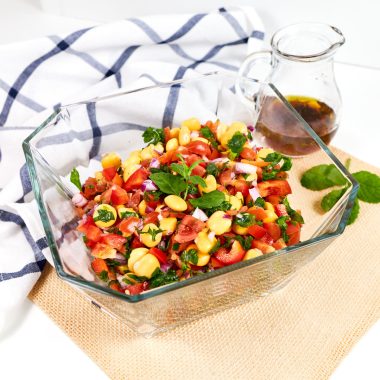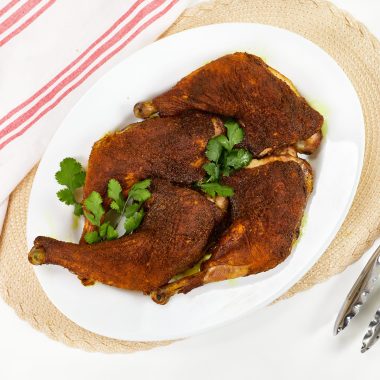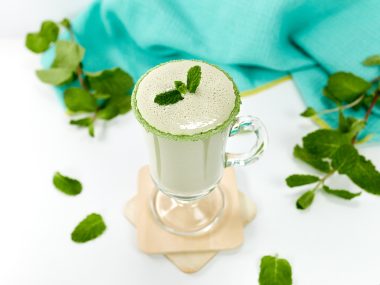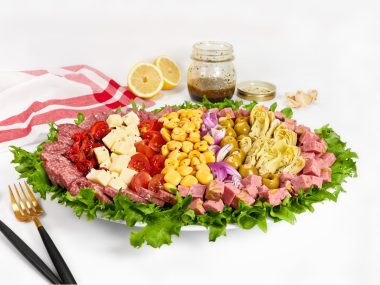Learn how to make dehydrated chicken powder at home: It makes a wonderful low-carb and carnivore flour for baking, or a stock powder that enriches your recipes with extra protein and delicious umami chicken flavor!
This is an easy one-ingredient (just chicken breast!) recipe that anyone can make without a dehydrator.
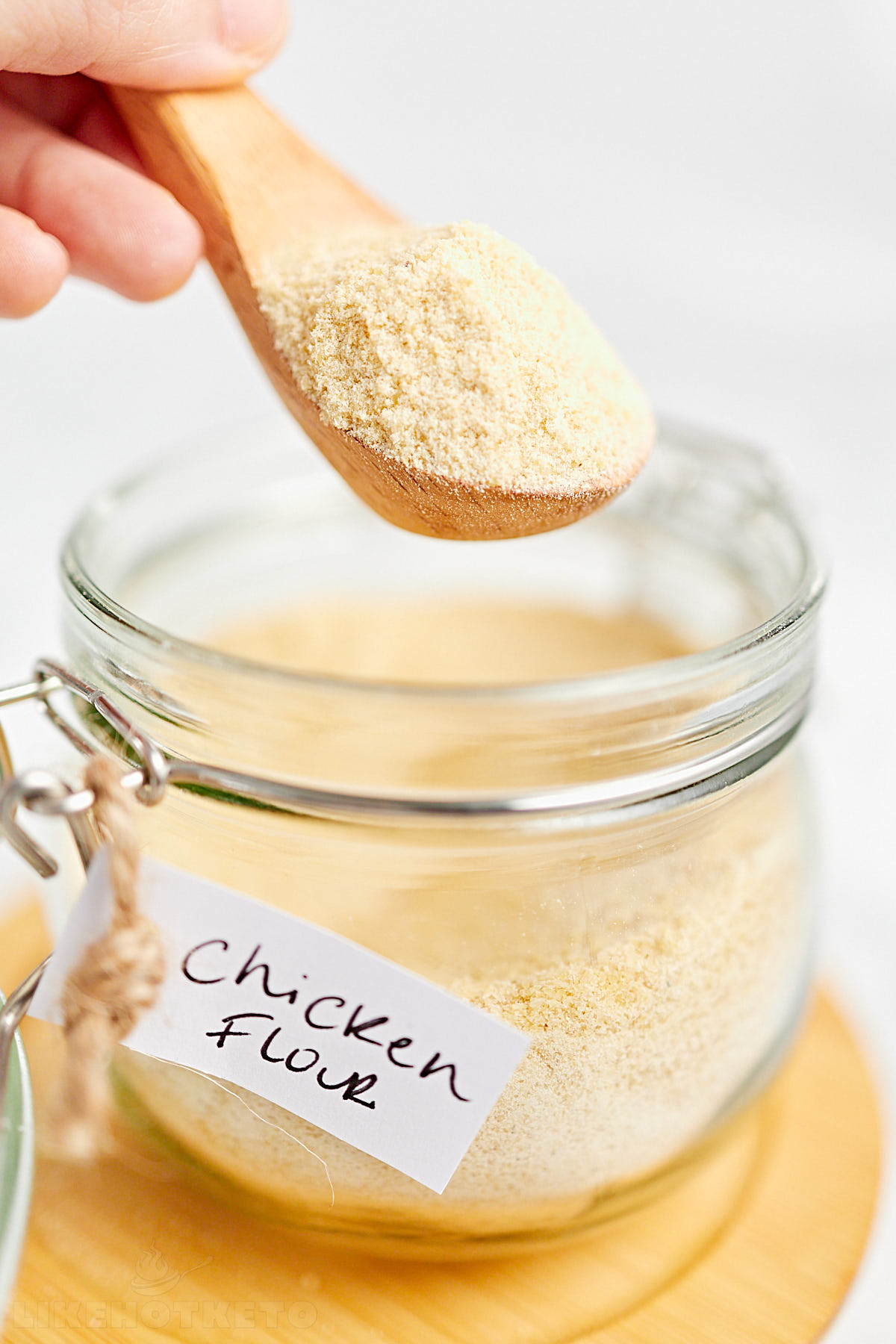
Commercial dehydrated chicken powder is typically produced by first cooking chicken meat, then removing the moisture through various dehydration methods such as freeze-drying or spray drying.
The resulting dried chicken is ground into a fine powder or flour.
My recipe for homemade chicken powder is made in a similar way. But I made some adaptations from the industrial method to make possible for home cooks to achieve similar results with the usual kitchen equipment.
You don’t even need a dehydrator to make it! Just a regular oven and a food processor. Optionally, you can also use a microwave and a smaller blender, if you work in batches.
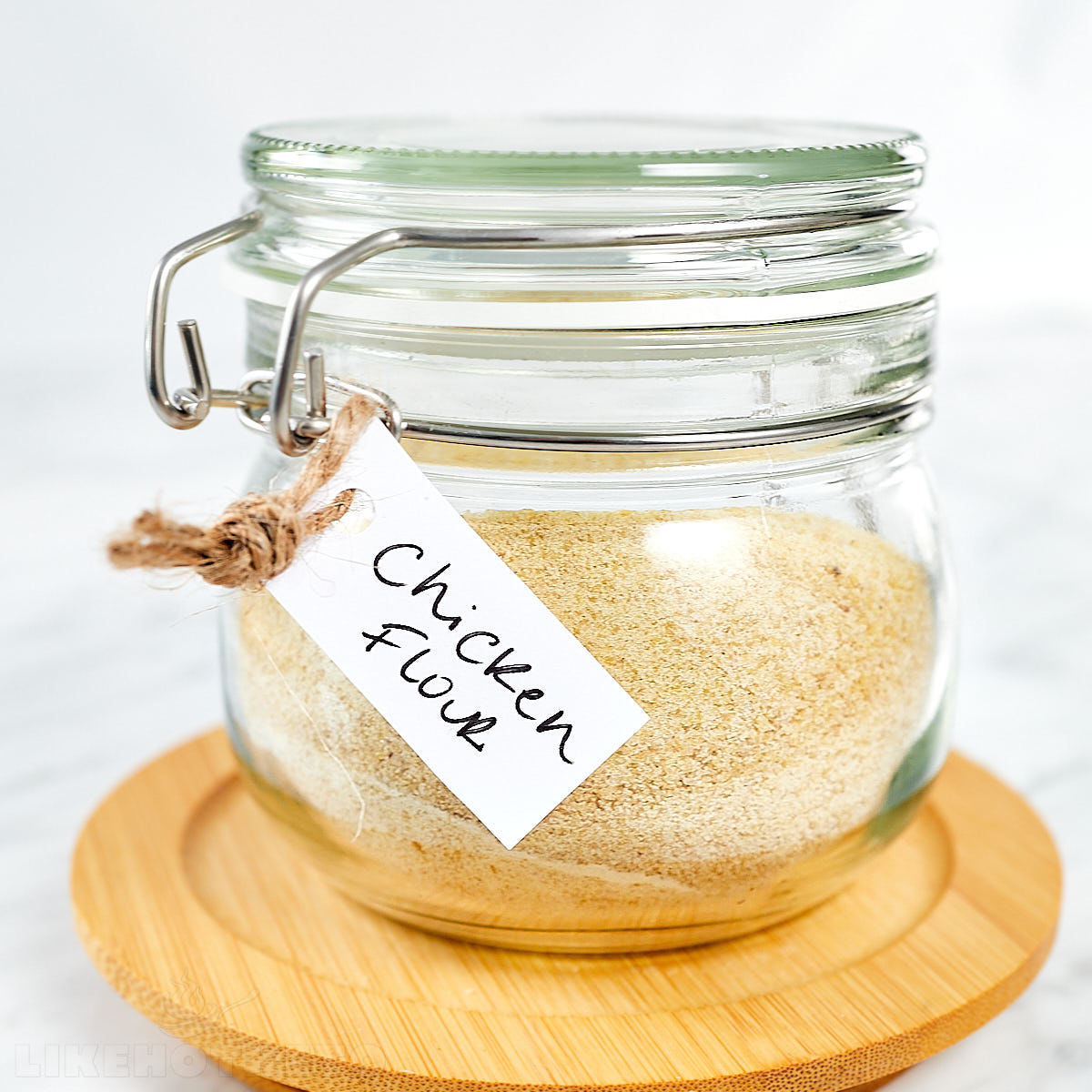
Ingredients
To make this chicken protein powder or flour, you’ll only need ONE ingredient:
- Skinless and boneless chicken breasts. (That’s it!)
This recipe is incredibly simple, easy and foolproof. But it takes time to make. So, although you could make the chicken flour out of just one chicken breast, I strongly recommend that you make a bigger batch.
In the recipe card below, I suggest 28 ounces (800 grams). I believe that’s the minimum you need to be worth your while.
It does not take much longer to make the recipe from a larger amount of chicken. And the dried chicken powder it will last a VERY long time if it is properly stored (refrigerated in an airtight container).
For largest batch I’ve made I used 70 ounces (2 kilos) of chicken breasts. I couldn’t bear to even smell chicken for a week after that, but it was worth it.
That gave me a lot of chicken flour to experiment and create carnivore recipes with!
Which was great as I knew I would need to make every new recipe a few times. I always test them out and tweak all the ingredients amounts for the tastiest results before I share them here at LikeHotKeto with you 🙂
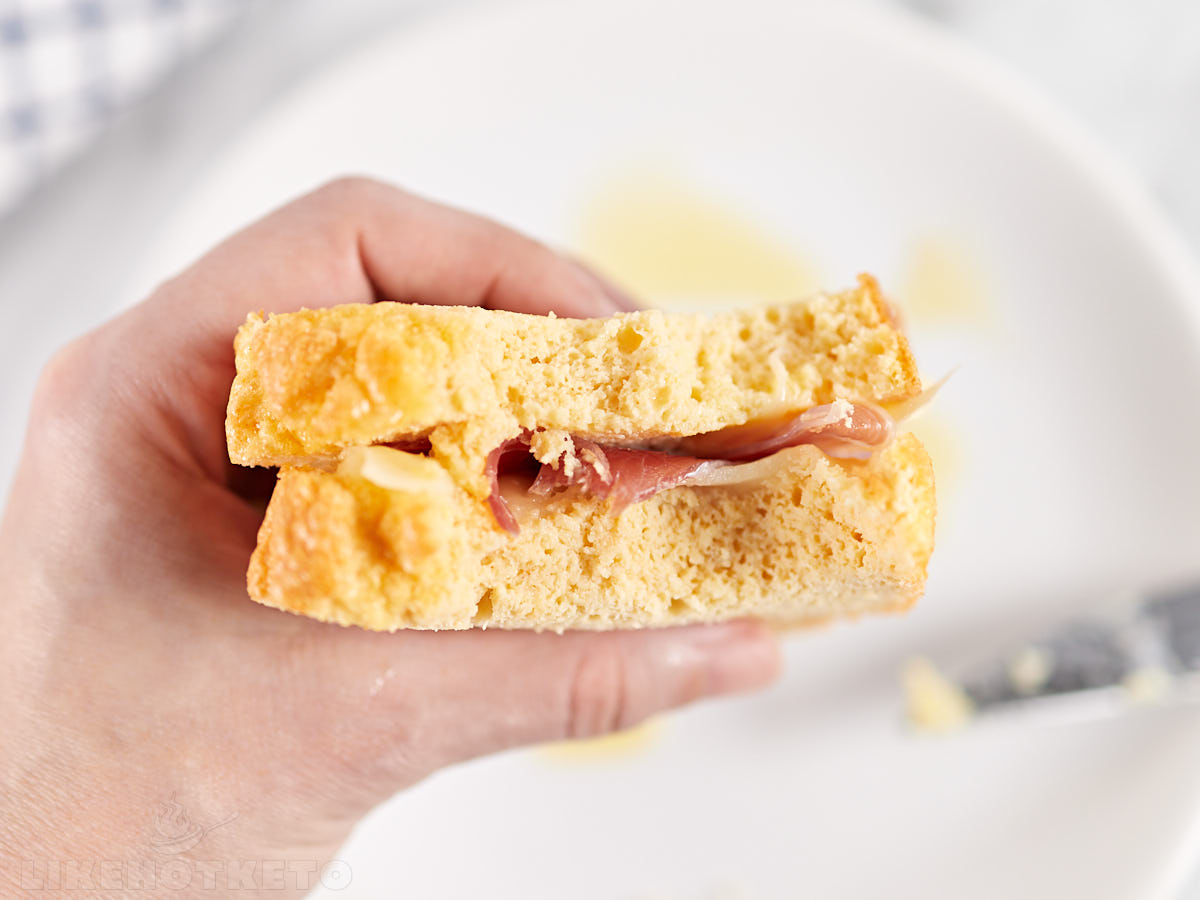
Why only chicken breast?
You’ll need to use skinless chicken breasts only and not any other part of the chicken for this recipe.
Chicken breasts are ideal to be dehydrated as they start with a lower level of moisture. Their fat content is also very low compared to the rest of the chicken. Fats and oils that can become rancid over time, and that would ruin the chicken flour!
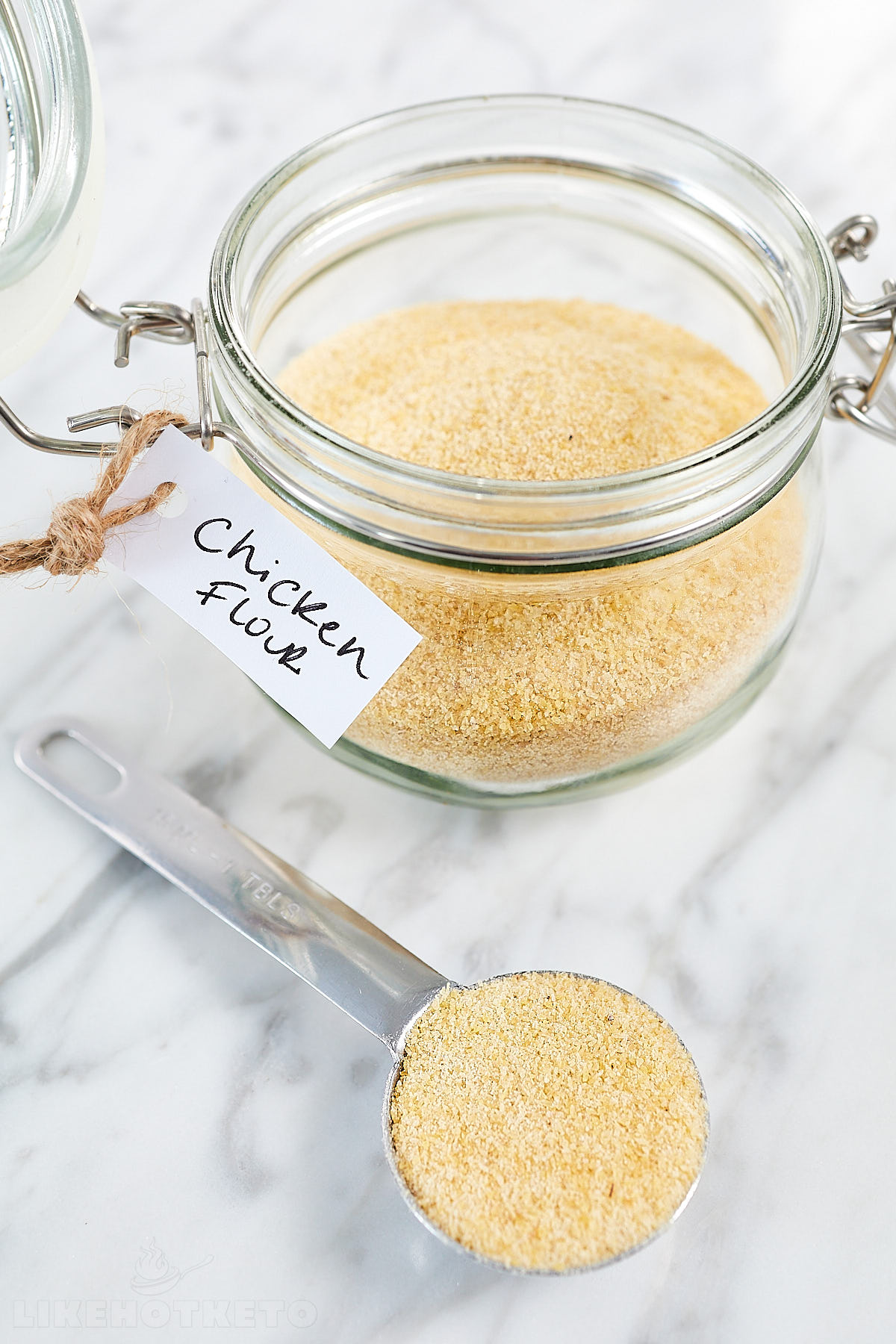
Equipment needed
To obtain the finest powder possible in a home kitchen, you’ll need a food processor (big blades) plus a spice grinder appliance or bullet type blender (small blades) and a fine mesh sieve.
You can make it with just the food processor and the sieve. But the end result won’t be as fine as you can see in my pictures. It will be good enough for most uses, though – think of the difference between almond flour and almond meal.
How to make step by step
There are two steps to the recipe if you want to make a dehydrated chicken powder to add flavor or enrich your dishes with nutritious protein.
For making a fine flour out of the dried chicken to use in baked goods, there is a third step to follow, in which we try to further refine it using a sieve and spice grinder to approximate the airiness of a milled flour (the best way we can).
Step one: Fully cook the chicken breasts
You can use any method of cooking you prefer, but for the fastest drying of the chicken meat the top choices would be the microwave, the oven or the air fryer.
Cooking the chicken in a pot with water is not a good idea, as you’d be introducing moisture that you’d have to bake longer to remove later on.
You can cut the skinless chicken breasts in small pieces or strips to cook faster. I find it easier to cook them whole first (Image 1/2), then slice them in halves (Image 3) and cook some more (Image 4).
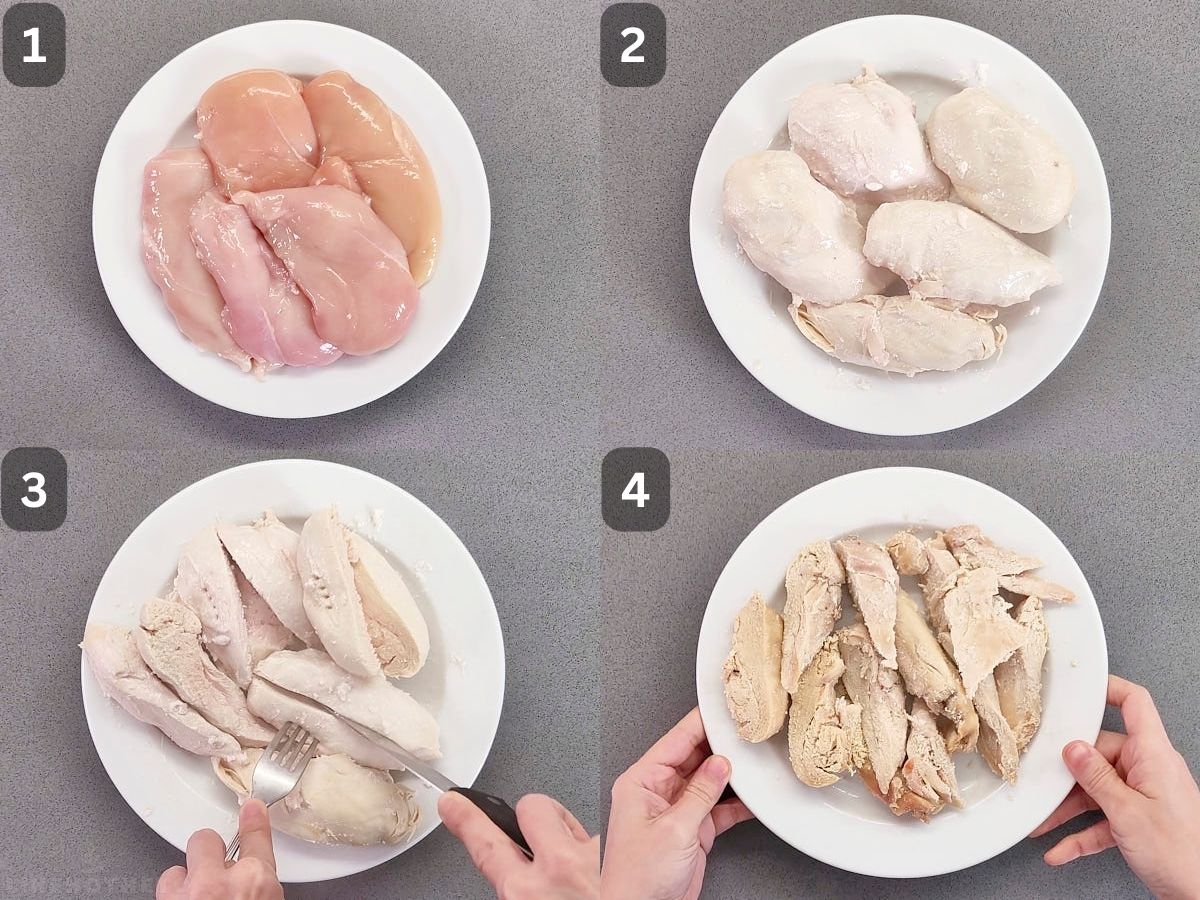
- If making in the oven, don’t turn it off when the chicken is ready, so it will be already preheated when you return the processed chicken for drying.
- If cooking in the microwave, put a lid on the plate to avoid chicken splatters.
After 15 minutes in the microwave (Image 2/3) or 20 minutes in the oven the chicken breasts may seem cooked enough, but you need to test to be sure.
Hot Tip: Squeeze the chicken breasts with metal tongues and check if there’s any liquid coming out. If there is, cook them for 5 minutes longer or until no more liquid comes out.
Remember, the idea is to dehydrate the chicken. So you’ll have to cook it until it’s dried out to the point where you wouldn’t want to eat it (Image 4).
Yes, you’ll purposefully overcook the chicken until it’s as hard and rubbery as a shoe sole!
Step two: Process and dehydrate
Wait for the cooked chicken breasts to cool down.
While waiting, line the largest baking pan or roasting pan you’ve got with parchment paper. Use a pan with high sides to prevent a mess while flipping the powder around later on.
Roughly chop the cooled chicken breasts up into smaller pieces (if you haven’t already done so before cooking).
Place the pieces in a food processor (Image 5) and blend them until completely pulverized (Image 6).
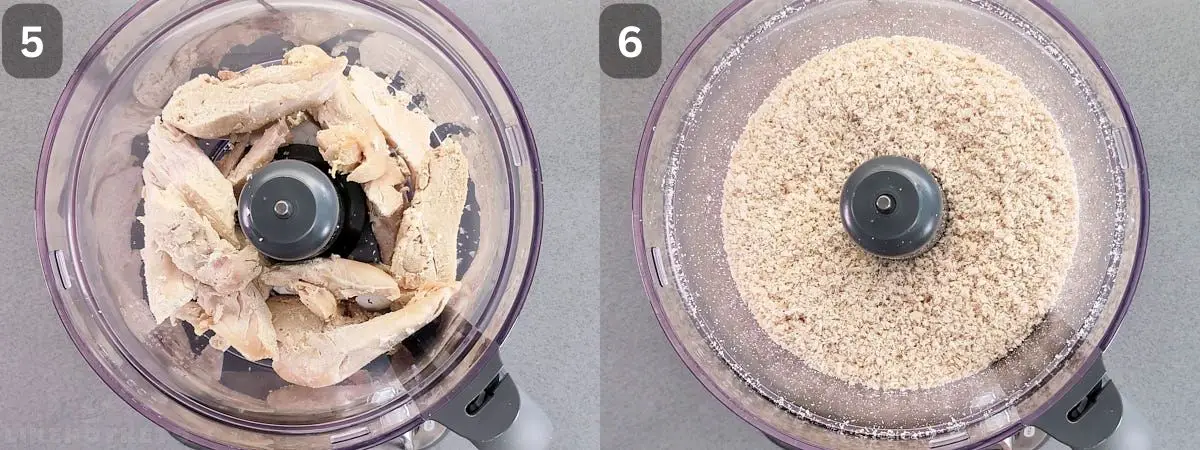
Spread the processed chicken uniformly inside the pan (Image 7). Ideally, you don’t want the layer to go over 1 inch thick, the thinner you manage to spread the chicken powder the faster the evaporation of the moisture will be.
Take the pan into the preheated oven at 350 °F (175 °C) and bake the powdered chicken for 10 minutes.
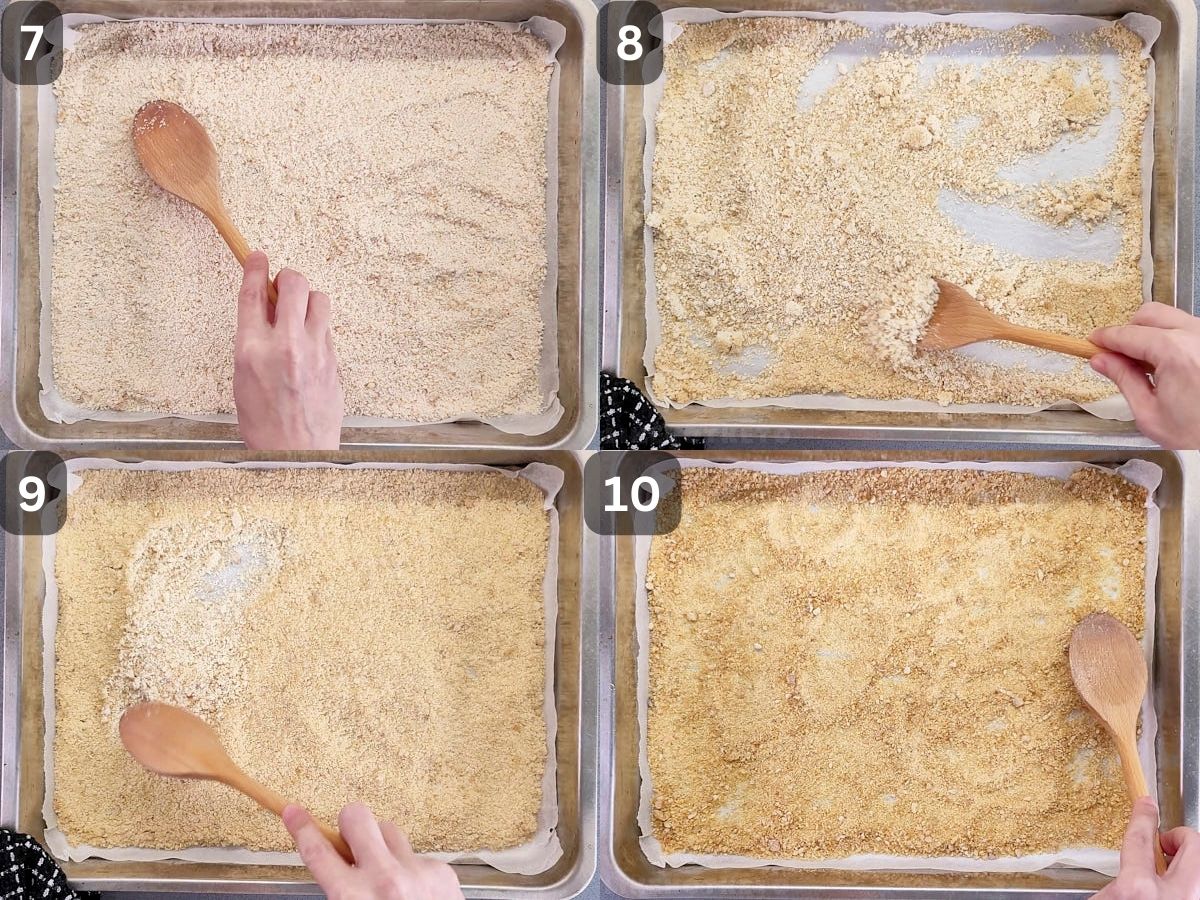
Remove it from the oven, and mix the chicken powder around in the pan (Image 8). The idea is to flip the chicken that’s in the bottom to come over the top, so it will get a chance to dry out in the oven heat in the next 10-minute round.
Return the pan into the oven. After 10 minutes, repeat the process of mixing/flipping around the powdered chicken.
Each time you remove the chicken from the oven, when you start flipping the powder you’ll notice 2 things (Image 9):
- The top layer is deeper in color, or more golden, compared to the bottom layer.
- There is water vapor coming up, especially when you “break the surface” of the chicken powder layer with the spoon/spatula when starting to mix it around.
How to tell when it’s ready?
You’ll know the chicken flour is ready when the vapor stops rising from the chicken when mixing. You’ll notice less and less evaporation each time you pull the tray out of the oven.
The whole process usually takes 4 rounds of 10 minutes in the oven. The chicken powder when ready will look fairly golden and finer (drier) when compared to the starting point, before roasting (Images 7 versus 10).
It may take more or less time for you, though. The evaporation depends on 3 factors:
- How well you cooked the chicken on the first stage (before processing)
- How fine you managed to powder it
- How deep is the layer of chicken inside the tray.
Hot Tip: Watch for the evaporation signs to be sure the chicken flour is ready. It’s VERY important that there’s no more vapors AT ALL coming out of the chicken as you mix it up. This will ensure that the flour is devoid of moisture and increase its shelf life.
The chicken powder is ready now as it’s fully dehydrated. If you plan to use it as an ingredient in dishes such as soups, casseroles or even breading for chicken or turkey, consider it done!
You can also use the flour as is in low-carb and carnivore baking without further processing. But!
For the best, fluffiest baking results I’ll show you how to transform the dehydrated chicken powder into an extra fine and airy flour, like in the picture below. Just follow Step 3:
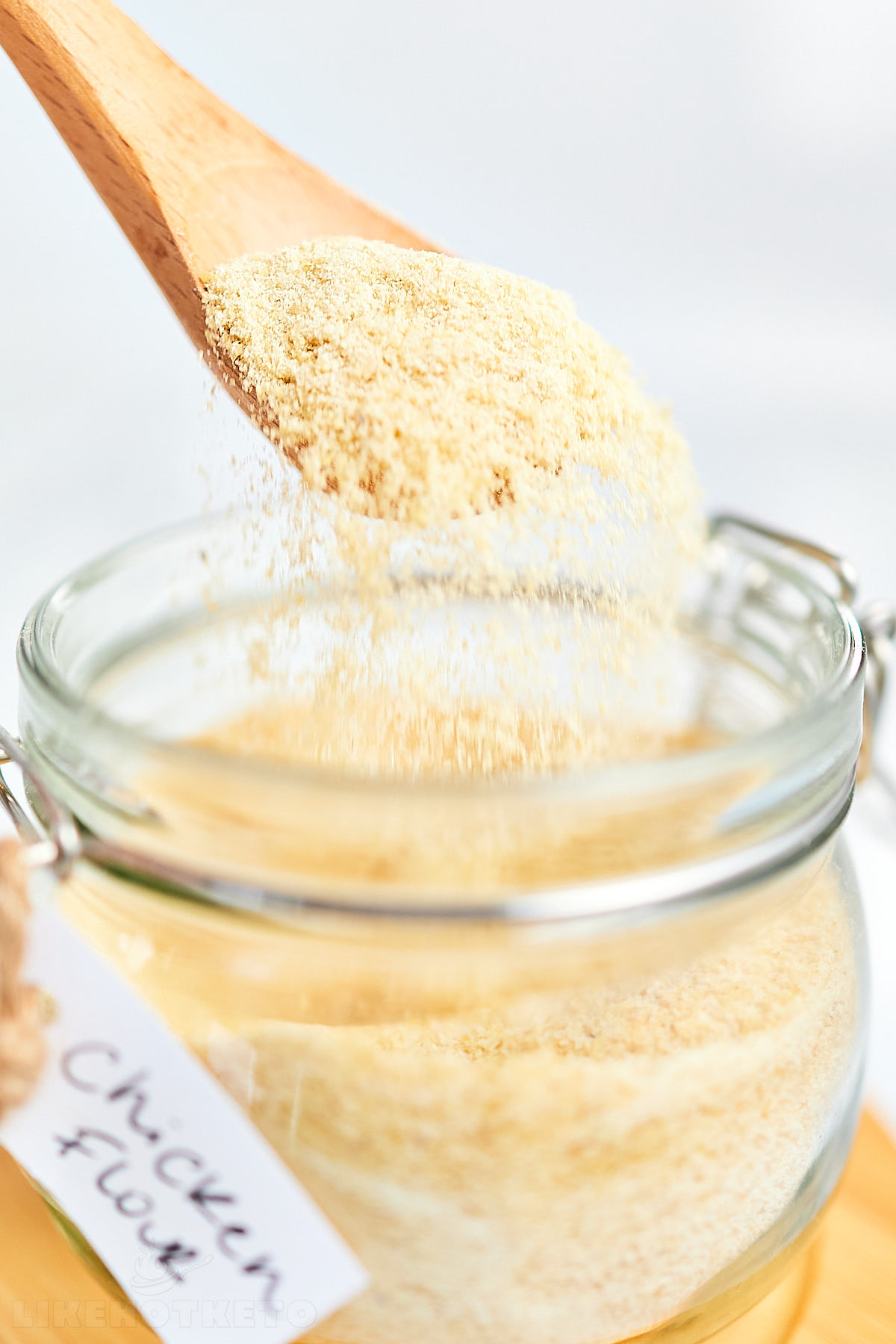
Step three (optional): Refine the flour
For the last step, wait for the roasted chicken powder to fully cool down and add it again to the food processor (or into a blender) and pulse (Image 11).
Then, pass the chicken powder through a fine mesh sieve (Image 12). Gather the larger crumbles that remain in the sieve, and process them again.

I found that my ultra powerful food processor couldn’t process the crumbles left in the sieve. Its huge blades wouldn’t “catch” the crumbles as they flew around inside the ample processor’s bowl.
I fixed that by transferring the larger chicken crumbles into a bullet blender (Image 13) and that’s how I managed to turn the chicken powder into a ultra fine flour (Image 14). It got nearly as fine as a protein powder!
So if you are having trouble using a food processor to refine the chicken powder into a fine, protein powder like flour, use a small blender or spice grinder instead.
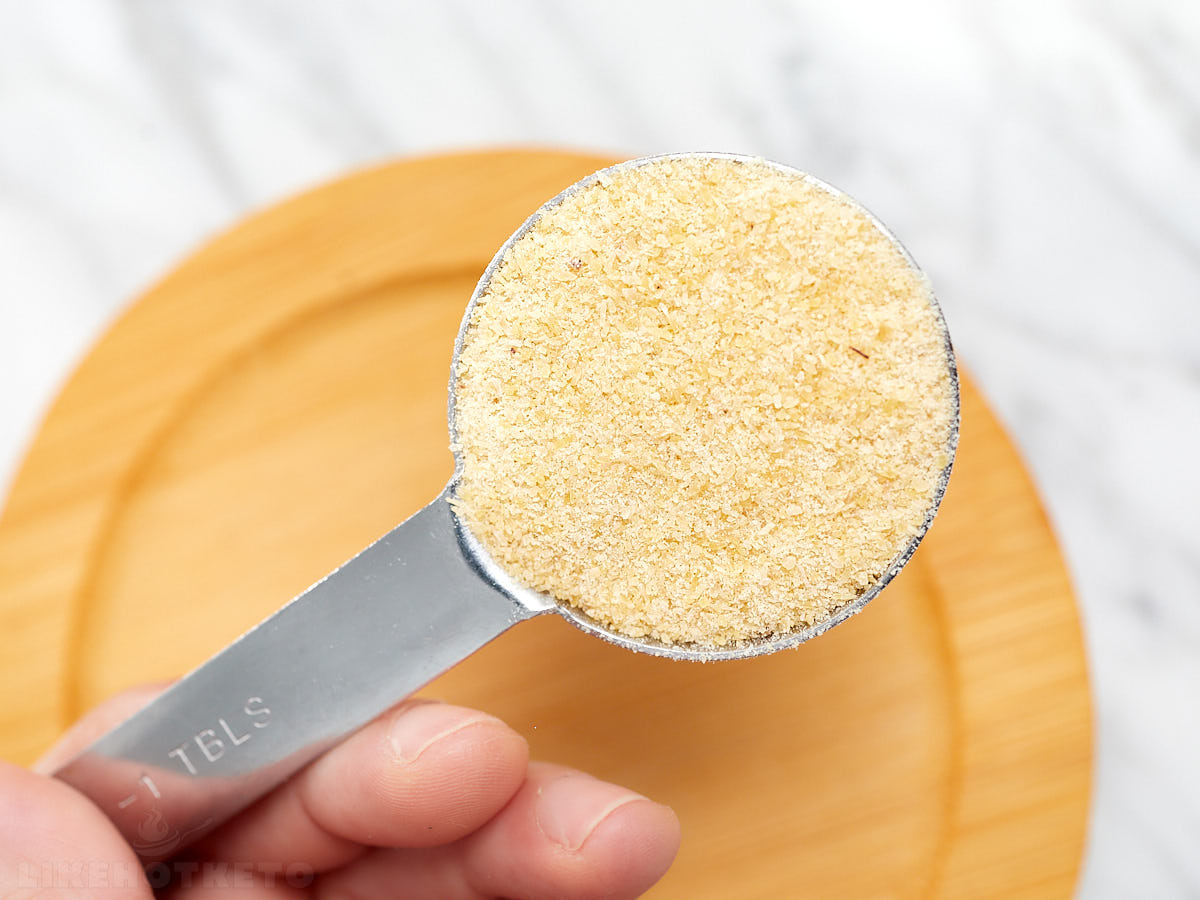
Chicken flour FAQ and tips
Flour yield
The resulting amount of chicken meat powder will be four times less than the starting weight of the fresh chicken breasts.
A medium-large skinless and boneless chicken breast weights about 7 ounces (200 grams). So if you used one chicken breast, you’d get 1.75 ounces or 50 grams of chicken powder.
If you start with 28 ounces or 800 grams (4 or 5 chicken breasts), after the whole process of cooking, processing, and dehydrating, you’ll be left with 7 ounces (200 grams) of chicken flour.
Now you can easily calculate how much meat you’ll need to use to fulfill your flour needs.
Making flour from chicken leftovers
You might be wondering if you can use chicken leftovers to make chicken powder. It depends on what you’ll be using it for:
For seasoning or bouillon
If you want to use as bouillon, for adding flavor or extra protein to your savory dishes and meals, then yes, you can use leftovers. They need to be chicken breasts, skinless and boneless, of course.
The preferable chicken leftover is that which was seasoned with salt only, and dry roasted (like rotisserie chicken or grilled chicken). That’s because the flavors added to the cooked chicken will be intensified as the meat dries.
For low-carb and carnivore flour
If you plan to make the chicken powder to be used as flour, like you’d use almond flour or coconut flour, to bake savory low-carb and carnivore treats with, it’s best not to use leftovers.
The best chicken flour is made from chicken breasts only, that have NOT been seasoned, salted, or cooked in oils or fats of any kind.
The reason why is that for using it as a flour you wouldn’t want any flavors (including smoke from the grill) or fats (including the chicken skin fat) added to the chicken meat.
This will make the purest chicken powder, with the cleanest flavor and nearly no smell. So you can use it to bake a variety of goods without extra flavors interfering with the recipe.

Measurement conversions for chicken flour
I created the conversion table below with my own measurements to help you use the chicken flour or powder in baking:
| Cups | Grams | Ounces |
| 1 c | 150 g | 5.3 oz |
| ½ c | 75 g | 2.6 oz |
| ⅓ c | 50 g | 1.76 oz |
| ¼ c | 35 g | 1.2 oz |
| 1 tablespoon | 10 g | 0.35 oz |
What’s chicken powder?
More commonly, dried powdered chicken is used as an ingredient in pet food. It’s often included in kibble ration for cats and dogs, for example.
When used for human food, chicken powder is available for sale as a broth powder by Lee Kum Kee called chicken bouillon powder. It’s not pure chicken though. Extra ingredients are added, such as salt, sugar, spices, maltodextrin and monosodium glutamate.
Unfortunately, pure chicken powder isn’t easy to find it in stores to be used as carnivore flour or protein supplement for people.
I’ve only seen this Carnivore Crisps Chicken Flour which is a very new product and current reviews aren’t great. I prefer to make my own 🙂
What can you do with chicken flour
There are many uses for homemade chicken powder or flour! Here are some suggestions:
- Enrich foods with extra protein
- Add pure chicken flavor to soups and other dishes
- Use in place of chicken bouillon or stock powder, without the added salt, artificial flavors, colors and preservatives
- As a keto, low-carb and carnivore flour for baking bread or waffles
- It’s great for long term storage and easy to transport, so it’s the ideal backpacking or camping food
How does it compare with other low-carb flours
It’s a surprisingly fine, loose and fluffy powder! I took the picture below to show you the dehydrated chicken powder texture and color in comparison with almond flour and coconut flour.
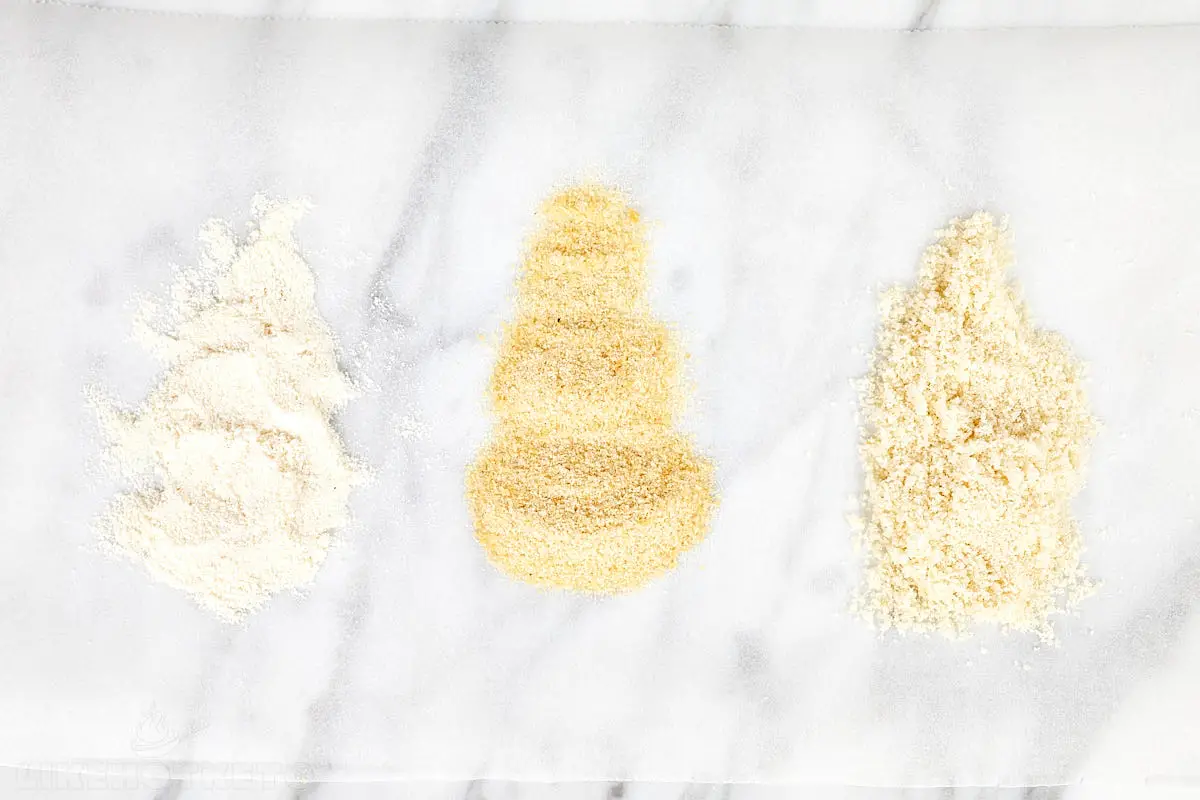
Isn’t amazing? I couldn’t believe my eyes when it was ready. It looks as fine as coconut flour, and significantly finer than extra fine almond flour!
As for how the chicken flour behaves in recipes, I noticed that it rehydrates quickly and it can thicken liquids. It is almost as strong as coconut flour in absorption power, but with a less grainy texture.
Nutrition in dehydrated chicken powder
Powdered dried chicken retains many of the nutritional components found in raw chicken but in a more concentrated form due to the removal of moisture.
For comparison, below are the nutritional contents of both pure dehydrated chicken breast and regular raw skinless chicken breasts (Source: USDA), per 3.5 ounces (100 grams):
Nutritional Content of Skinless, Boneless Chicken Breasts (per 3.5 ounces/100 grams):
- Calories: 158 calories
- Protein: 32.1 grams
- Fat: 3.24 grams
- Carbohydrates: 0
- Vitamins: Contains vitamins like B6, B12, niacin, and smaller amounts of other B vitamins.
- Minerals: Contains minerals like calcium, iron, phosphorus, selenium, and small amounts of manganese and zinc.
- Moisture Content: 65.3 grams (varies with chicken type and cut).
Nutritional Content of Dehydrated Chicken Breasts (per 3.5 ounces/100 grams):
- Calories: Approximately 290-350 calories
- Protein: Higher than in raw chicken breasts, around 80 grams
- Fat: Approximately 3 grams
- Carbohydrates: 0
- Vitamins: Contains vitamins like B6, B12, niacin, and smaller amounts of other B vitamins.
- Minerals: Contains minerals like calcium, iron, phosphorus, selenium, and small amounts of manganese and zinc.
- Moisture Content: Virtually all moisture is removed, so it contains very little water.
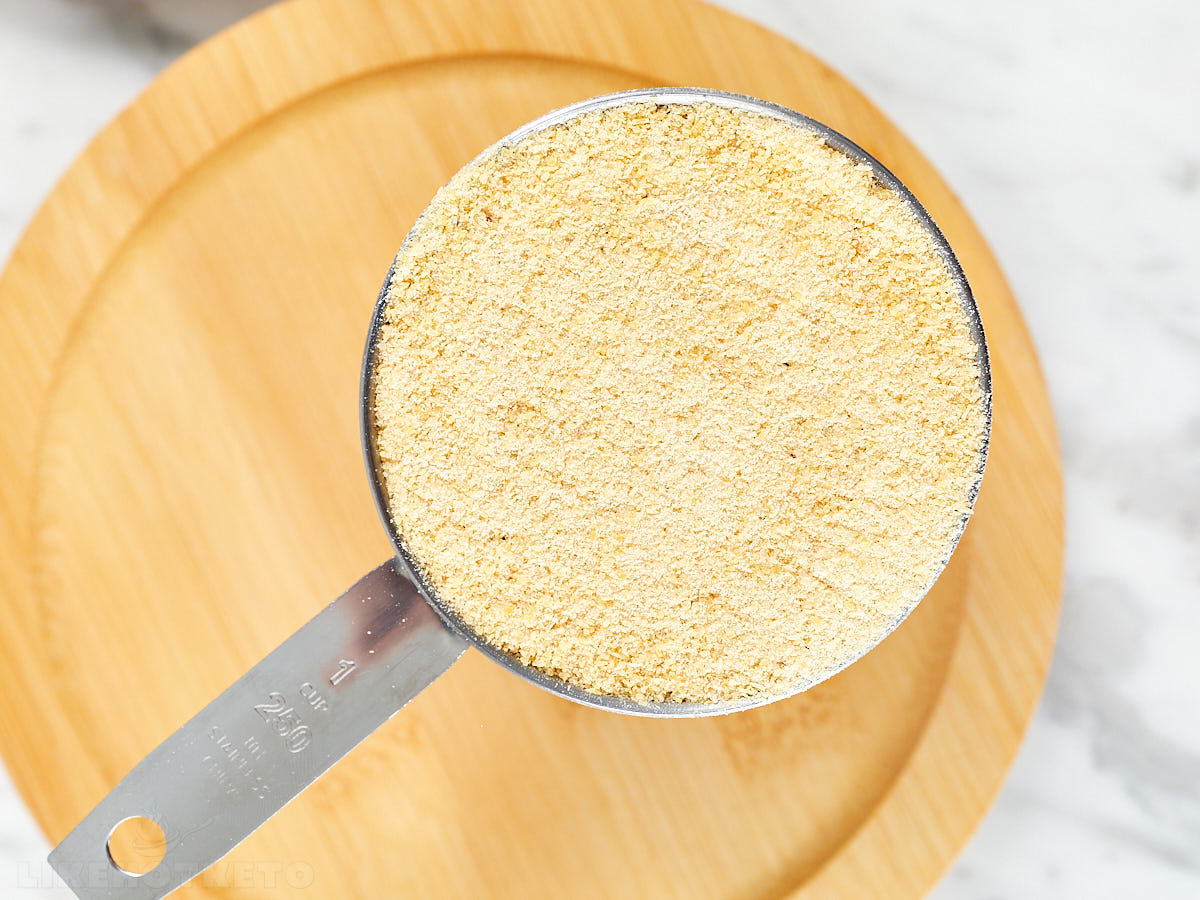
Storage
It’s important to keep it in an airtight container to prevent moisture absorption. A clip top mason jar with a proper rubber seal is ideal and it will keep your chicken flour fresh for a long time.
While refrigerated in an airtight jar, I’ve kept dehydrated powdered chicken fresh tasting for over six months.
I haven’t seen a batch gone bad yet, but check every time for freshness before using. If you notice an off smell or color, discard the flour as it might not be safe to consume anymore.
Recipe ideas with chicken flour
Here are some recipe ideas for you to use up your chicken flour:
Chicken flour bread: This carnivore chicken bread is made with only two ingredients: Chicken flour and eggs. It’s a fluffy, golden crust white bread that’s easy so slice and perfect for sandwiches.
Chicken chaffles: These chicken flour waffles are like keto chaffles, but can be made with our without cheese – your choice! They are deliciously crispy and quick to make.

Chicken Flour (Dehydrated Chicken Powder)
Equipment
- Spice grinder optional
Ingredients
- 4 to 5 skinless and boneless chicken breasts About 28 ounces (800 grams)
Instructions
- Cook the chicken breasts in the microwave or in the oven until they are fully cooked and look dry. It will take about 15 minutes in the microwave or 20 minutes in the preheated oven at 350 °F (175 °C). Squeeze the meat to make sure there's no liquid left in it, if there is cook them for a few more minutes.
- Let the chicken breasts fully cool down. Roughly chop them up. Add the pieces to a food processor and blend them until they are completely pulverized. Do it in batches if needed.
- Line a large baking tray with high sides with parchment paper. Spread the processed chicken breast meat in a uniform layer no higher than one inch tall. Take it into the preheated oven at 350 °F (175 °C) for 10 minutes.
- Remove from the oven and mix with a wooden spoon or spatula, flipping the chicken powder around. Even out the powder to cover the whole bottom of the tray, and take it back into the oven for another 10 minute round of drying.
- Repeat the process at least two more times (for a total of four times). You can stop and turn off the oven only when there is no more water vapor coming from the chicken powder as you mix it.
- Wait for the dehydrated chicken powder to fully cool down. It's ready to be used to add flavor or enrich meals with protein. If you wish to make it into a extra fine carnivore flour, follow the remaining steps:
- Transfer the cooled dried powdered chicken into the food processor and pulse a few times.
- Pass the chicken breast powder through a fine mesh sieve into a bowl. Gather the crumbles left behind and process them again in a spice grinder or small blender. Repeat the process of passing the ground crumbles through the sieve as needed.
Notes
Nutrition
Copyright Pris Frank for LikeHotKeto. Please DO NOT SCREENSHOT OR COPY/PASTE recipes to social media or websites. We’d LOVE for you to share a link to this recipe instead 🙂 Try the easy sharing buttons below!
